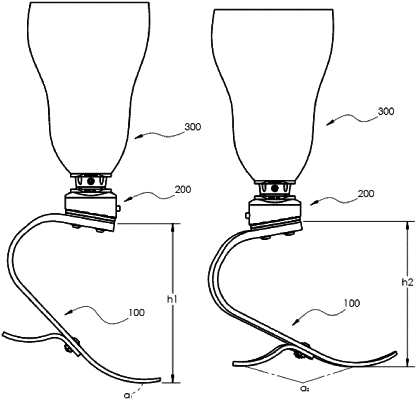| CPC A61F 2/6607 (2013.01) [A61F 2002/5018 (2013.01); A61F 2002/5069 (2013.01)] | 16 Claims |

|
1. A prosthetic device comprising:
a foot portion having a heel side and a toe side; and
a switching adapter comprising:
a first member coupled to the foot portion;
a second member;
a third member interposed between the first member and the second member, the third member having a bottom surface adjacent the first member and a top surface adjacent the second member, the bottom and top surfaces being angled relative to each other;
the third member configured to rotate relative to the first member about a first center axis and relative to the second member about a second center axis, the first center axis having an angular offset relative to the second center axis;
the third member being rotatable relative to both the first and second member into a first position, thereby placing the prosthetic device in a walking mode and being rotatable relative to both the first member and the second member into towards a second position, thereby placing the prosthetic device in a running mode, an angle of the foot portion relative to the second member changing between the walking mode and the running mode such that the toe side is angled more downwardly relative to the heel side in the running mode than in the walking mode; and
a locking mechanism configured to allow rotation of the third member relative to the first member and the second member when engaged and to prevent rotation of the third member relative to the first member and the second member when not engaged.
|